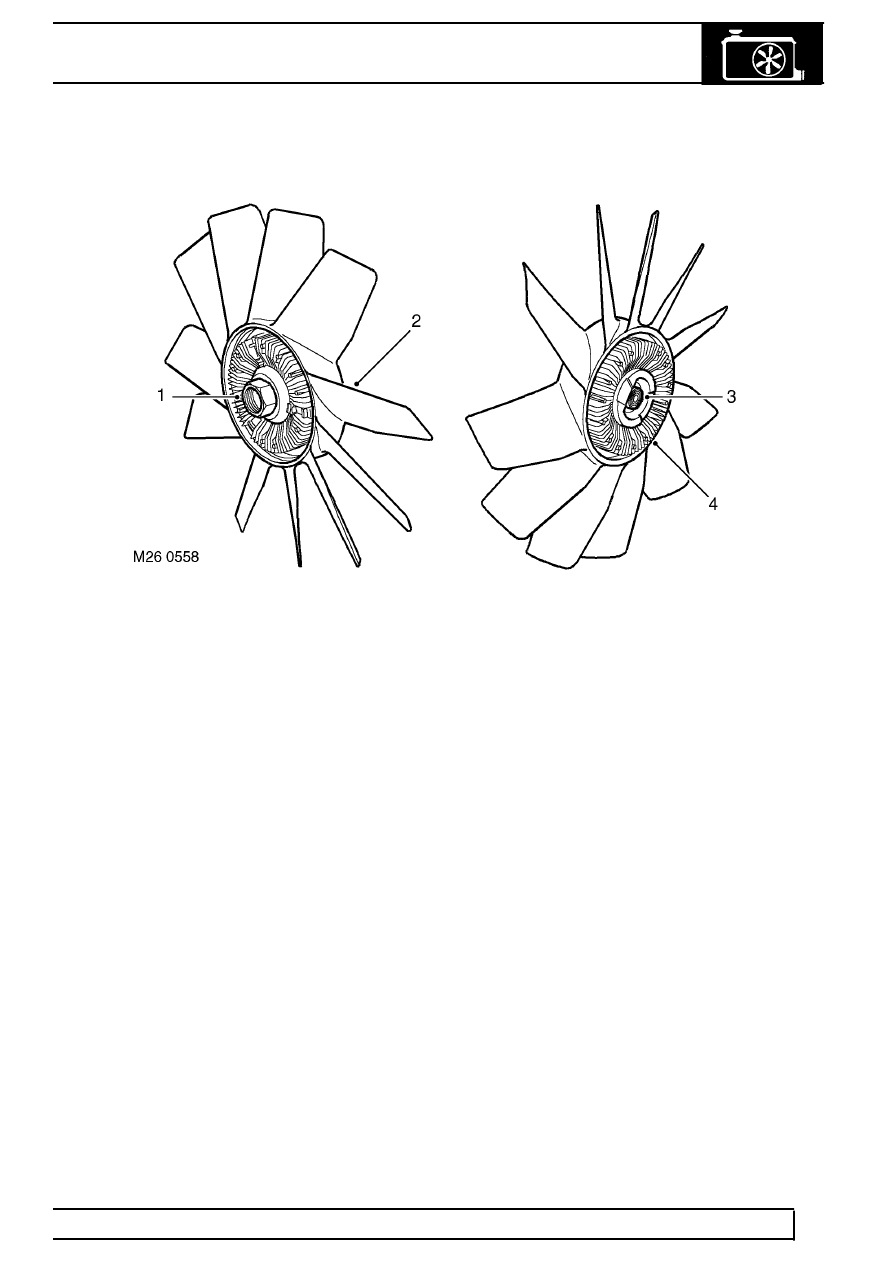TD5 Defender

COOLING SYSTEM
9
DESCRIPTION AND OPERATION
Viscous Fan
1. Idler pulley drive attachment
2. Fan blades
3. Bi-metallic coil
4. Body
The viscous fan provides a means of controlling the speed of the fan relative to the operating temperature of the
engine. The fan rotation draws air through the radiator, reducing engine coolant temperatures when the vehicle is
stationary or moving slowly.
The viscous fan is attached to an idler pulley at the front of the engine which is driven at crankshaft speed by the
auxiliary drive belt. The fan is secured to the pulley by a right hand threaded nut. The nut is positively attached to
the fan spindle which is supported on bearings in the fan body. The viscous drive comprises a circular drive plate
attached to the spindle and driven from the idler pulley. The drive plate and body have interlocking annular
grooves with a small clearance which provides the drive when silicone fluid enters the fluid chamber. A bi-metallic
coil is fitted externally on the forward face of the body. The coil is connected to and operates a valve in the body.
The valve operates on a valve plate with ports that connect the reservoir to the fluid chamber. The valve plate also
has return ports which, when the valve is closed, scoop fluid from the fluid chamber and push it into the reservoir
under centrifugal force.
Silicone fluid is retained in a reservoir at the front of the body. When the engine is off and the fan is stationary, the
silicone fluid level stabilises between the reservoir and the fluid chamber. This will result in the fan operating when
the engine is started, but the drive will be removed quickly after the fan starts rotating and the fan will ’freewheel’.
